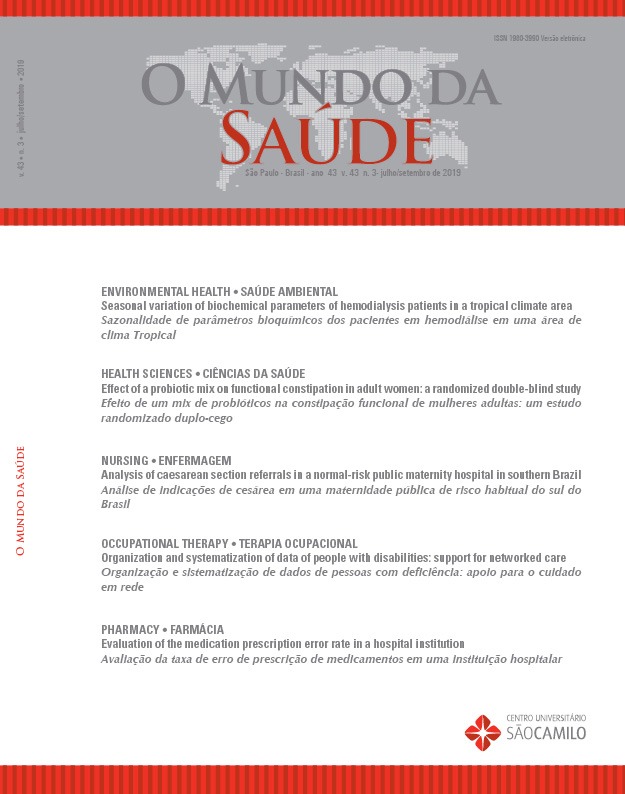Seasonal variation of biochemical parameters of hemodialysis patients in a tropical climate area
DOI:
https://doi.org/10.15343/0104-7809.20194303566585Keywords:
Seasons, Climate, Kidney dialysisAbstract
The results of hemodialysis laboratory tests guide the monitoring of the patient’s health conditions, nutritional status and the quality of the procedure. The objective is to analyze the seasonal variations of biochemical parameters of hemodialysis patients in a tropical area of Brazil. This is a longitudinal epidemiological study of the seasonal variation of repeated measurements for hemoglobin, hematocrit, calcium, potassium, phosphorus, glucose, glutamic-pyruvic transaminase, pre- and postdialysis urea, KtV, and urea reduction rate in hemodialysis patients in the city of Cáceres, Brazilian Pantanal in the year 2014, in the savannah tropical climate area. January was used as the reference month and linear mixed effects regression models were used. All laboratory variables analyzed presented significant seasonal variation in at least two months in 2014. Hemoglobin and hematocrit displayed the lowest values in autumn and the highest in winter. Calcium remained stable and showed two high peaks in autumn and winter. Phosphorus, potassium and glutamic-pyruvic transaminase showed higher values in autumn and lower values in spring. KtV, urea reduction rate, predialysis and postdialysis urea, had the lowest peaks in winter and the highest in spring. Glucose showed instability with a high peak in spring and a lower peak in autumn. It is concluded that the biochemical parameters of chronic renal patients on hemodialysis display seasonal variations related to climatic seasonal variation in a tropical savannah climate area in Brazil. The variations observed tend to become inverted in the months with higher and lower temperatures.






























